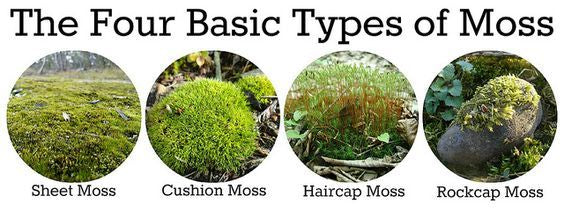 When you think of lush forests or serene garden landscapes, your mind might drift to towering trees or vibrant flowers. But let’s take a step closer to the ground, to the realm of the small yet fascinating moss. Often overlooked, moss is a silent hero in the plant kingdom, offering beauty, ecological benefits, and even a touch of ancient mystique.
When you think of lush forests or serene garden landscapes, your mind might drift to towering trees or vibrant flowers. But let’s take a step closer to the ground, to the realm of the small yet fascinating moss. Often overlooked, moss is a silent hero in the plant kingdom, offering beauty, ecological benefits, and even a touch of ancient mystique.Moss: A Living Carpet
Mosses are tiny, non-vascular plants that form dense green mats or carpets on forest floors, rocks, and even rooftops. Unlike most plants, they don’t have roots or flowers. Instead, they absorb water and nutrients directly through their leaves. This gives them an incredible ability to thrive in moist, shady environments where other plants might struggle.
Ancient and Resilient
Mosses are ancient plants, with a lineage dating back hundreds of millions of years. They’ve survived through dramatic changes in Earth’s climate and geology. Their resilience is partly due to their simplicity; without complex structures like roots or vascular tissue, they can endure harsh conditions by simply going dormant until the environment improves.
Ecological Superstars
You might wonder, what makes moss so special? For starters, they play a crucial role in their ecosystems. Mosses help retain moisture in the soil, prevent erosion, and provide habitat for countless tiny organisms. In forests, they create a microhabitat for insects, fungi, and even small mammals. Their ability to hold water also makes them vital in regulating the forest’s microclimate.
The Garden’s Green Gem
In gardens, moss can be a delightful addition. It adds a soft, verdant layer that contrasts beautifully with more structured plants. Moss gardens, popular in Japanese culture, emphasize tranquility and simplicity. They’re low-maintenance, too; once established, moss gardens require minimal upkeep. They don’t need mowing or fertilizing, just a bit of moisture to keep them lush.
Moss in Modern Times
Beyond gardens, moss is finding its way into modern architecture and design. Green roofs and walls often incorporate moss for its aesthetic appeal and environmental benefits. It’s also being studied for its potential in pollution control, as some species can absorb heavy metals and other contaminants from the air.
Bringing Moss Home
If you’re intrigued by moss, why not bring some into your home? Terrariums are an easy way to start. These miniature gardens can thrive indoors with a bit of indirect light and regular misting. Plus, they’re a great way to get creative with different moss species and decorative elements.
Moss might not be the flashiest plant, but its subtle charm and ecological importance make it worth celebrating. Whether you’re wandering through a forest, tending to a garden, or sprucing up your home, take a moment to appreciate these tiny green wonders. They’ve been here long before us and, with any luck, will continue to thrive for eons to come.
